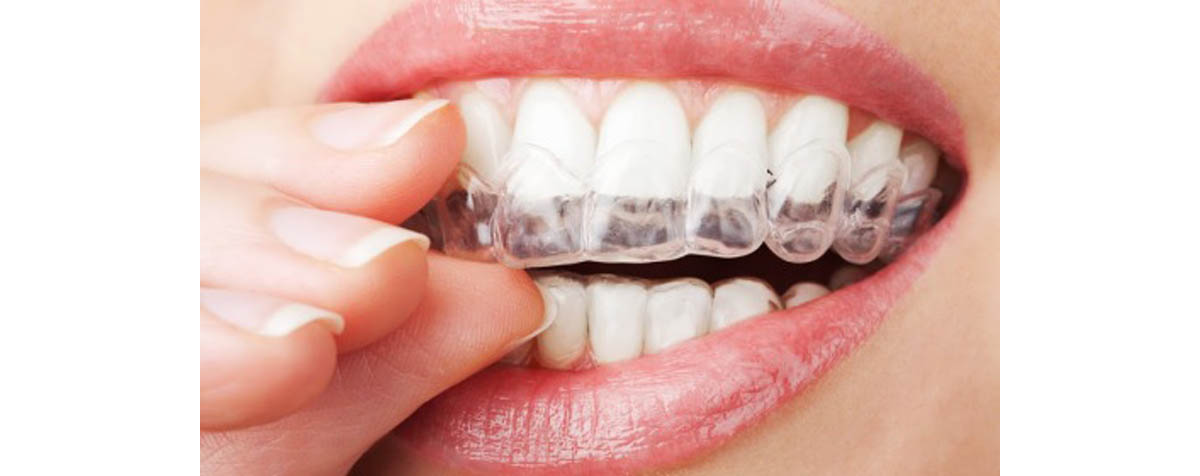The desire to have a sparkling white smile is nothing new – in fact, the ancient Romans used a mixture of goats’ milk and urine to keep their teeth gorgeous! It’s an inevitable fact that as we get older and age, the outer layer of our white tooth enamel starts to become thinner, allowing the yellow-colored dentin beneath to show through, making the teeth appear darker. Substances which tend to stain the teeth get through the gaps between the tooth enamel crystals and stain the dentin beneath.

Worst Teeth Stainers
It is commonly said that anything which will stain a white tee shirt, will also stain your teeth. What stains your teeth the worst, though? We are all very familiar with the obvious culprits such as tea, coffee, red wine and tobacco.
Ironically some constituents of dental preparations such as mouthwashes can also stain your teeth – an example being chlorhexidine and cetylpyridinium chloride. Also some medicines such as the antibiotics minocycline and doxycycline, are associated with tooth staining. With practically everything turning that perfect smile yellow, it's really no wonder that many of us turn to professionals and home-use kits to attempt to restore that former whiteness to our mouths.
Whitening Versus Bleaching
Have you seen the phrases teeth whitening and teeth bleaching thrown around? They are in fact not the same thing, There is a difference between tooth whitening and bleaching and it’s important to understand the difference as it has implications in terms of cost, and potential hazards.
Tooth whitening just restores the teeth to their original color by removing stains and dirt from your teeth, hence special toothpastes can incorporate such whitening ingredients. Tooth bleaching on the other hand, means whitening teeth beyond their natural color, for extra shiny teeth.
Tooth Whitening
All toothpastes contain mild abrasive particles such as aluminium oxide, calcium carbonate or phosphate and silica, which will lift surface stains and help to maintain natural tooth whiteness. So simply regulary brushing your teeth — yes that means twice a day! — is the easiest way to prevent and treat mild staining.
Special whitening toothpastes, however, contain other chemicals or abrasives designed to have more of a whitening effect, such as bicarbonate of soda. But like regular toothpastes they will only remove staining and cannot change the color of your teeth.
DIY tooth whiteners
If you fancy a little harmless tooth whitening at home, private dentist Adina Carrel, DMD, from Manhattan Dental Arts in New York recommends making use of the malic acid contained in strawberries.
Adina warns not to use this treatment more than once a week, as the acid could damage the teeth if over-used.
Regularly eating crunchy foods like apples, carrots and celery may also help to preserve the whiteness of teeth by stimulating saliva flow, which has a cleaning action. These foods also act as mild abrasives to ‘scrub’ the teeth clean. The malic acid in apples might also have a whitening effect.
The Facts About Tooth Bleaching
Current tooth bleaches are composed of either carbamide peroxide, which evolves hydrogen peroxide in the mouth, or of hydrogen peroxide itself. Where carbamide peroxide is the bleach, it is present in much greater concentrations to produce sufficient quantity of hydrogen peroxide. So bleaching gel contains between 10% and 44% carbamide peroxide, in order to produce 3% to 16% hydrogen peroxide concentration.

As well as being used by professionals, these agents are available in varying concentrations in home use kits.
(Dentists may use light activation which is alleged to enhance and quicken the bleaching process).
Hazards of bleaching
Hydrogen peroxide bleaches have the potential to give chemical burns to soft tissues in the mouth like the gums. For this reason dentists will often apply a barrier to the soft tissues to protect them.
Light activation can be hazardous as it increases the temperature of the teeth which could damage the tooth pulp, which contains the blood vessels which keep the tooth alive.
Increased sensitivity of the teeth to hot and cold is common following bleaching and can be very painful in some people.
Other aspect to consider
Bleaching is not permanent and will last for varying periods of time in different people, but at best it will be up to a few months.
Bleaching does not produce a good result for all discolored teeth - depending on their shade of discolour. Teeth that are yellowed produce the best results followed by brownish discolored teeth. Those of a grayish shade respond least well to bleaching.
Use of tooth bleaches may produce uneven results. An early stage in the development of tooth decay is for the tooth substance to lose its calcium concentration (decalcification) which leaves a dark spot. This might not be very visible to the untrained eye before bleaching, but afterwards may be much more noticeable against the surrounding whitened tooth.
Similarly when white tooth fillings are used, the dentist often colors them to match the surrounding tooth substance, so that they blend in well.
Teeth may appear dark due to the presence of large amalgam (mercury-containing metal) fillings which ‘shine’ through the thinned enamel. No amount of whitening or bleaching will change their appearance and the only solution would be to swap the filling for a different material, or restorative technique from your dentist.
Your dentist will be able to advise you if any of these warnings apply to you.
Home bleaching
The ADA gives its Seal of Acceptance to products which meet their standards of effectiveness and safety. So either consult their website (see ‘Links’ below) or speak to your own dentist before choosing a product for home use.
- www.nature.com/bdj/journal/v204/n9/full/sj.bdj.2008.291.html
- www.mouthhealthy.org/en/az-topics/w/whitening.aspx
- www.emedicine.medscape.com/article/1076389-overview#aw2aab6b2b3
- www.health.com/health/article/0,,20410846,00.html
- Photo courtesy of Local photos by Picasa : lh3.googleusercontent.com/-t__m_IRyuac/T4Bw2B7a3WI/AAAAAAAJE_w/mW4xVOdwzyc/s473/Teeth%2520whitening%2520liverpool%2520cosmetic%2520dentist%2520invisalign%2520braces.jpg
- Photo courtesy of ThermalDent by Picasa : lh6.googleusercontent.com/-emYoUwF5hqo/UbwZkMcR_PI/AAAAAAAAAH8/GRw55AHI2V4/s800/teeth-whitening.jpg
- www.emedicine.medscape.com/article/1076389-overview#aw2aab6b2b3
- www.mouthhealthy.org (ADA website)


Your thoughts on this